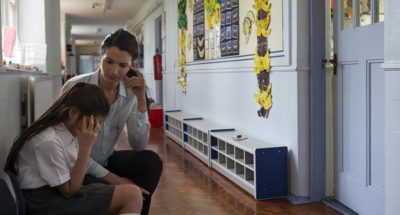
Mindfully Creating Positive Relationships with Students
A brief practice that involves recalling and focusing your attention on the emotional experience associated with helping a student in order to recognize and understand your emotional patterns

A brief practice that involves recalling and focusing your attention on the emotional experience associated with helping a student in order to recognize and understand your emotional patterns
Teachers will:
If you’re leading this exercise with a group of teachers, take a moment to visualize a student you have helped in the past. What happened? How did it feel?
Adapted from Mindfulness for Teachers by Patricia A. Jennings. Copyright © 2015. Published by W. W. Norton. Excerpted by permission of the publisher.
Do you notice a shift in how teachers relate to students after engaging in this practice?
Studies have found that teachers who practice mindfulness may experience an increase in awareness, focused attention, and working memory capacity—all of which can help them to become more intentional in the kinds of relationships they build with their students.
And decades of research show that for students from pre-K to 12, positive student-teacher relationships increase engagement, motivation, prosocial—kind and helpful—behavior, and academic achievement.
The teacher-student relationship is at the heart of teaching. Indeed, students do better when their teacher cares about them.
The impact of this relationship has long-lasting effects, as well. Conflict-ridden relationships with teachers in kindergarten predict worse grades, work habits, and discipline problems into late elementary or even middle school–thus pointing to the importance of fostering healthy relationships early on, especially with students who struggle with being successful in school.

Are you ready to build a kinder, happier school where everyone belongs? Join Greater Good Educators! Explore the science of well-being in a supportive community of educators from around the world. Registration is now open for the 2025-2026 school year!
Comments